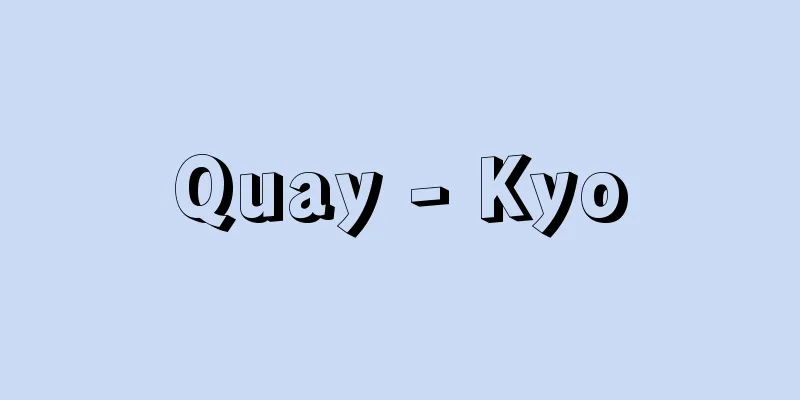Independent accounting system

|
A management system that aims for a single enterprise or a management unit within a company such as a division or factory to be financially independent through its own income and expenditure. In a liberal economy, it is self-evident that a single enterprise will be an independent accounting unit, so the question is whether or not to adopt an independent accounting system only for the management unit within the company. The term "independent accounting system" itself comes from hozraschyot, a system used in the Soviet Union, a socialist country. It was adopted as a system to prevent state-owned enterprises from running losses, to allow them to operate with a certain degree of autonomy within the limits of their plans, and to improve efficiency. Although the essential conditions are different, this type of independent accounting system was also conceived separately in a liberal economy and applied to public enterprises. In this system, the aim was to streamline public enterprises based on the basic principle of achieving balance of income and expenditure through independent management efforts, rather than simply making up losses with general financial resources such as taxes. For example, the movement to automate state-owned enterprises in Germany and other European countries after World War I, which led to the independence of public enterprises from national finances, the emergence of public corporations in nationalized industries in the UK, and public corporations such as the TVA in the US were all public enterprises with independent accounting systems. In Japan, not only independent public enterprises but also national forest enterprises and local public enterprises that belong to the special business account also adopt independent accounting systems. Large-scale, diversified private enterprises use a divisional system to make each division an independent accounting unit. [Mitsuo Morimoto] "Planned Economy and the Self-Financial System" by Ken Matsuo, Michio Nakamura, and Mitsuyoshi Matsuo (1978, Chuo Keizaisha) " "Self-Financial System of Local Public Enterprises" by Ken Osaka (1992, Showado) [Reference items] | |Source: Shogakukan Encyclopedia Nipponica About Encyclopedia Nipponica Information | Legend |
|
単一企業または事業部・工場などの企業内経営単位が、自己の収支によって財務的に自立することを目ざす経営管理制度。自由主義経済では、単一企業が独立採算単位になるのは自明であるので、企業内経営単位についてのみ独立採算制をとるか否かが問題になる。独立採算制という用語自体は、社会主義国であったソ連のホズラスチョットхозрасчёт/hozraschyotからきている。それは、国有企業に赤字を出さず、しかも計画の限度内で一定の自主性ある経営を行わせ、能率向上を図る制度として採用されたものである。 このような独立採算制は、本質的条件は異なるが、自由主義経済でも別途に構想され、公企業に適用されるようになっていた。そこでは、損失を税金等の一般財源によって安易に埋め合わせるのではなく、経営の自主的努力による収支適合の実現を基本原則とする公企業の能率化が意図されていた。たとえば、第一次世界大戦後のドイツをはじめとするヨーロッパ諸国の国有企業の自主化運動にみられる公企業の国家財政からの自主化をはじめ、イギリスの国有産業における公共企業体の出現、アメリカのTVAなどの公共企業体は、すべて独立採算制の公企業であった。日本の公企業でも、独立公企業はもとより、事業特別会計に属する国有林野事業、地方公営企業は、独立採算制をとっている。なお、大規模・多角化した私企業では、事業部制によって各事業部を独立採算単位にしている。 [森本三男] 『松尾憲橘・中村美智夫・松尾光芳著『計画経済と独立採算制』(1978・中央経済社)』▽『大坂健著『地方公営企業の独立採算制』(1992・昭和堂)』 [参照項目] | |出典 小学館 日本大百科全書(ニッポニカ)日本大百科全書(ニッポニカ)について 情報 | 凡例 |
<<: Independent self-sustained peasant
>>: Commonwealth of Independent States; CIS
Recommend
Pockels effect
...The relaxation time of the Kerr effect of nitr...
Gas electrode
An electrode that contains gaseous substances amon...
Guyenne (English spelling)
A region in southwestern France. Former province. ...
Acetyl chloride
Acetic acid chloride. It is more commonly called ...
"Miscellaneous Anatomy Notes"
…An Italian physician. After graduating from the ...
Ekiden - Ekiden
In the Heian period, rice fields were poor and nee...
Jiujiang
A prefecture-level city in the northernmost part ...
Applejack
(1) Apple brandy. (2) A baked confectionery made f...
Surtr
…When Pompeii was buried by the great eruption of...
Color Centers
They are also called color centers. When transpar...
The origins of the mountains
This is a record of the origins and history of Mou...
Enshu Plain - Enshu Heiya
...Part of the western half belongs to the Inner ...
Tobita Suishū
Baseball commentator. Real name Tadayori. Born in...
Launch - Shinsui (English spelling) launch
The act of floating a ship built on a slipway or ...
Mesembryanthemum
...A group of succulents from the family Vulaceae...




![Kazuno [city] - Kazuno](/upload/images/67cb3854d44a8.webp)




